I have a feeling some of you seasoned Real Fooders are gonna laugh at this one, but here goes yet another story of this noob’s traditional cooking adventures. Maybe there are still some of you that have not yet made this discovery like me. Either way, it’s pretty awesome.
So, I was roasting up a whole, organic chicken (wishing it were local and pastured…) the other night, as I frequently do, and thinking about how much I loved that with my knowledge of nourishing, traditional cooking, I knew to save all that extra stuff I used to (*gasp!*) throw away — the bones, carcass, even those scary-looking gizzards and neck stuffed up its rump (although I wish they would have stuffed its head and feet up there too!)– for making chicken stock. I thought about how cool is it to be able to use the WHOLE chicken — all of its parts — much like how many traditional cultures such as native American tribes would, out of both necessity and respect to the animal for its sacrifice to nourish us. Well, and because they knew how good all those things are for us to eat!
After devouring as much of the bird as Pre-Hubs and I could, I put the remains away in the fridge for leftovers, and got a little excited for making my next round of stock with the carcass. Feeling satisfied that none of this tasty creature would go to waste, I suddenly realized that there actually was still quite a bit of goodness from the roast that was unaccounted for — that I would have normally dumped down the drain.
The delicious roasting juice!
Ah! I already had spooned some of it into our rice (cooked in chicken stock, of course) as we ate our meal, so why not save the rest of it to use as a tasty dressing to other foods? I was thinking, stir-fry vegetables, or even to add a little moisture back into the leftover chicken meat. So, I bottled it up in a mason jar and popped it in the fridge. Every last bit of this nourishing chicken would be consumed. Go me!
I proudly reflected upon my frugal, traditional cooking prowess and went to sleep.
In the morning, I opened the fridge to find my jar of juice looking, well, a little different!
Wait a second… is that… fat?
My eyes lit up.
I opened the jar and poked this creamy layer sitting atop my chicken juice — it was solid! That had to mean this was chicken fat, right?
Gears were turning inside my only relatively-recently-enlightened Real-Food-minded noggin. Of the many nourishing, healthy fats we ought to consume, there’s lard, which I know is rendered by slowly cooking down pig fat; tallow which is made the same way from beef, and then there was… what was it?
Oh, yeah!
SCHMALTZ!
(what an awesome word, by the way. Schmaltz. Schhhmaaallt-zzz. Heh. Hehe.)
From chickens! (and other birds.)
I think that’s what I made!
I mean, there’s fat in the chicken, I slowly cooked it down while roasting, and then I was left with the congealed, rendered fat — just like lard and tallow, right? Right.
I spooned this treasured fatty treat into another jar — it deserved its own — and marveled at my discovery. How awesome! Here I was thinking I was just plumb out of luck when it came to rendering my own delicious cooking fats (pastured pork fat and suet are pretty much impossible to come by where I live), when all along, this super-easy and readily-available animal fat was right under my nose! Or, in my freezer. Or… in my oven. But, definitely, no longer down the drain!!
I’ll be sure to use my fancy-schmancy-schmaltz the next time I need a good cooking fat. Thank you, Chicken!
Is rendering chicken schmaltz from a roast, routine in your kitchen? Or are you like me and didn’t realize that “juice” was really delicious, useable fat?! (Or, are you all entirely amazed that it took me this long to figure it out? ;))
{This post is being shared with Monday Mania at The Healthy Home Economist, Fat Tuesday at Real Food Forager, and Real Food Wednesday at Kelly the Kitchen Kop!}
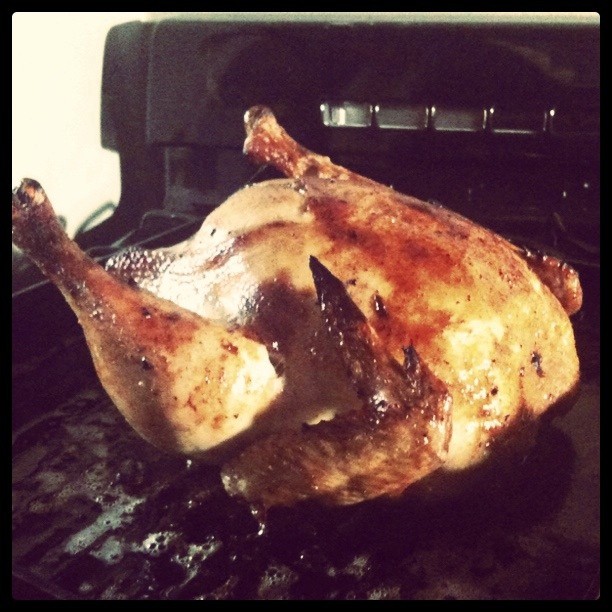
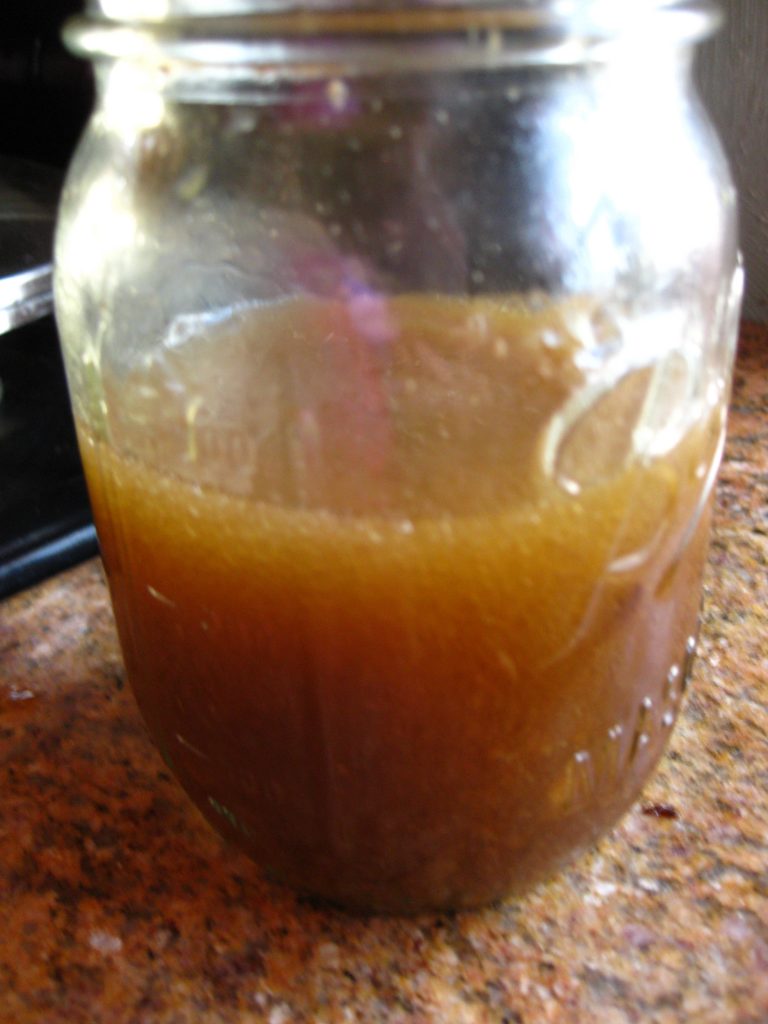
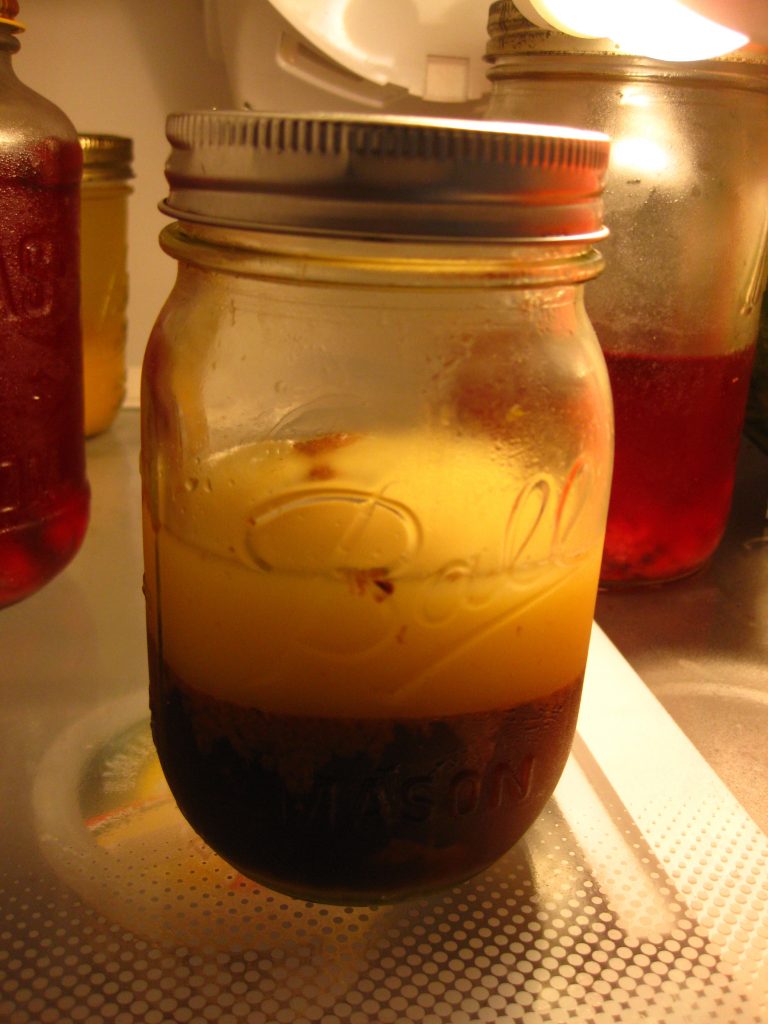
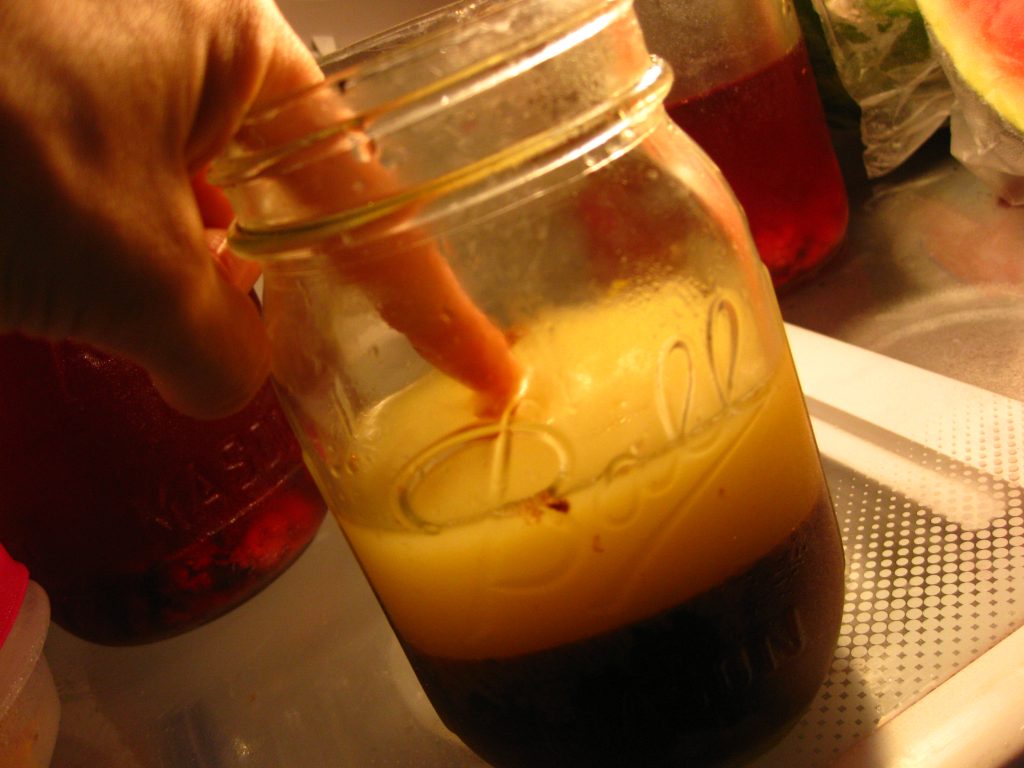
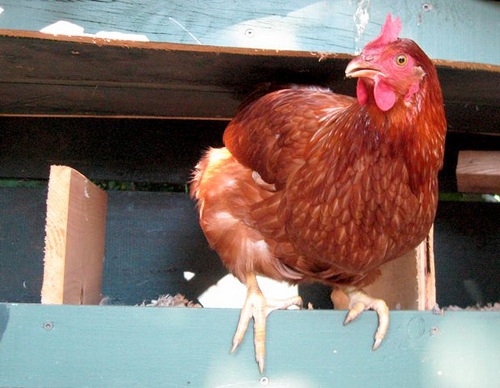



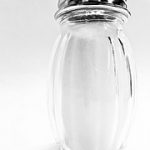
Ha! Ha! That was so funny. I like your name for it much better than mine, chicken fat. LOL! Was the broth underneath the fat like a jelly? That stuff is to die for!
Oh my gosh, YES! It’s like chicken jello!! LOL!
I added all the drippings from my last roast chicken to my stock pot, along with the carcass, some feet, and a raw chicken back. When the stock cooled there was a lovely layer of fat, which I skimmed off and now have stored in my freezer, labeled “schmaltz”! (I love that word, too.) Not 100% sure how to use it.., I’ve just started using lard, and I’m loving it.
You schmear it on bread, silly!
I have two girlfriends who will not consume anything that is not considered low fat. They always tell me just how “good” my food is and cannot replicate it at home.
I have never stopped cooking traditionally, I was brought up this way and just could never convince myself it was good to through out something that tasted so good.
You should be able to get pork and beef suet in slabs at the heath food store if you ask for them. We always cook down the pork and eat the cracklins- Real cracklins are to die for.
Enjoy your adventure!
Ugh, isn’t it frustrating having friends who aren’t open-minded enough to think about their own food choices, instead of blindly following the USDA?? Good food tastes good, it’s a no-brainer!
Gosh, I wish I had a decent health food store. The only ones other than Whole Foods (which is 40 miles away from me) are “vegetarian” stores — so annoying! I didn’t know the one in my neighborhood was, and when I went in looking for nitrate-free bacon, they pointed me to “Fakin’ Bacon” — GROSS!!
oh I am SO calling it Schmaltz now! I’m also one who adds the drippings to the carcass when it’s cooking down for bone broth/stock. What I like to do is actually collect several carcasses in the freezer in those giant 2 gallon freezer bags and then throw them all in the stockpot together. Cook up a bunch of stock, then I can skim off all the fat at once. I also keep a container in the freezer for veggie trimmings and I throw them in too.
OH and just so you know – to REALLY REALLY use all of it, you can burn the bones afterwards if you have a wood stove (or outdoors) and then the ashes are calcium fortified and are incredibly awesome for your garden. So then, nothing goes in the trash 🙂 Either that, or bury the boiled-to-mush carcass in the garden where it won’t be disturbed for a while.
Ooh, thanks Bethany! I think I will try your garden-bones tip!
When I made stock out of a carcass and some feet and heads, it didn’t give me any fat to skim off! 🙁 I was so bummed.
Emily, Your posts are so fun! It is exciting to discover something new, isn’t it? Thanks for the link love last week too! I have been so busy with travel that I haven’t had a chance to thank you til now! Have a fatastic week! 🙂
Haha thanks, Jen!! Oh of course, always happy to link to you! I’m always finding stuff I love on your blog — sometimes it’s hard to not put you up there on my links every week! Gotta spread the love, lol!
You’re so funny. I use chicken fat in most anything chicken related/veggie related (as opposed to using bacon grease in so much). I make my stock and let it set in the freezer. I then go back and scrape off the fat. Pop it in the fridge and keep it handy for skillet dishes or anything else! I have a post about it on my blog if you search for chicken stock. Thanks for sharing your findings!
Thanks Nikki! I will have to check out your post for more tips on stock, cause when I made mine, I didn’t get any fat on the top! So sad. At least I have my schmatz now. 🙂
Thanks for linking your great post to FAT TUESDAY. Your adventures are hilarious! I use the schmaltzzzz for my grain-free matzoh balls and that makes them delicious!
Hope to see you next week! Be sure to visit RealFoodForager.com on Sunday for
Sunday Snippets – your post from Fat Tuesday may be featured there!
http://realfoodforager.com/2011/10/fat-tuesday-october-4-2011/
If you have grain-free recipes please visit Wednesday night for a grain-free linky carnival in support of my 28 day grain-free challenge starting Wednesday!
Yiddish words are great, aren’t they? (Yiddish is like Hebrew – Jewish- slang)
How do you cook with schmaltz? I’ve rendered it before…and actually have a bunch sitting in a pan at the moment…but I’m not sure what to cook in it?
Yes! Sometimes I secretly wish I were Jewish. 😀
So far, I have just used it to stir-fry veggies. Since it does taste pretty chicken-y, I kind of have to reserve it for savory stuff like that, whereas with lard you can bake with it, etc. I think I’m going to spread a little onto some rice tonight — I cook it in chicken stock, so this will make it extra flavorful I bet!
In Ukraine we use it for all sorts of dishes, anywhere you would sautee’ in butter. you can also smear it on bread! Yum! Baba used to use it to finish holubtsi, cabbage rolls stuffed with meat and rice.
HI,
I Featured this great post at Sunday Snippets. Come an take a peek!
http://realfoodforager.com/2011/10/sunday-snippets-october-9-2011/
Yay!! Will do! Thank you, Jill!
Hi, schmaltz is a beautiful word. Yiddish is Germanic — low German, to be more exact — not related to Hebrew. In fact, one says fat in German the same way. I remember relatives who kvelled (swooned) over stories of eating schmaltz on toasted sour rye bread as children in the old country. Thanks for the fun posts! just found your website tonight…
OK, to nit pick, yes, Yiddish has nothing to do with Hebrew other than both are Jewish and use the same alphabet – but while Yiddish is primarily derived from German, it would be overstating it to call it low German (whatever that means.) Yiddish has words derived from many languages, and while many words are the same as in German, many words intentionally had the meanings twisted so that non-Jews wouldn’t understand what was being said.
And yes, schmaltz means chicken fat in yiddish. My cousin loved to smear it on her bread when we were kids in the Bronx.
I though it was hoch deutsch, or actually alt deutsch. and “fat” in deutsch is “fett”. Schmalz is closer to the meaning of “lard”, basically any rendered animal fat.
Love your writing. The humor,pics,descriptions, exclamations. Kindred. I’ve been making my own chicken broth for years. Nourishing Traditions fan. I’ve always roasted the chicken first. Pick the chicken. Sneak some crispy skin to munch. Reserve the meat for other meals. Save the bones, drippings, some skin to make the broth. Usually have a good amount of fat surface. Are you saving skin for broth? Oh, eating it all are you? hehe My favorite way to use the drippings is to add it to my quinoa. Fry some onions, red bell pepper, etc in butter. Add this, chopped chicken, cooked quinoa and voila! Yummers!
Hi Butterbeliever!
I absolutely love your post!
I too save my fat drippings from all sorts of cooking, whether I’m crispying bacon, roast chicken or just rending out some lardons. I try not to waste these flavor bombs!
I have linked this post in my blog (a local blog on money saving and waste reducing tips for the small tropical island of Singapore).
The post is here – http://frugallivingsg.blogspot.sg/2014/04/cooking-saving-hack-part-1-planning-to.html
🙂